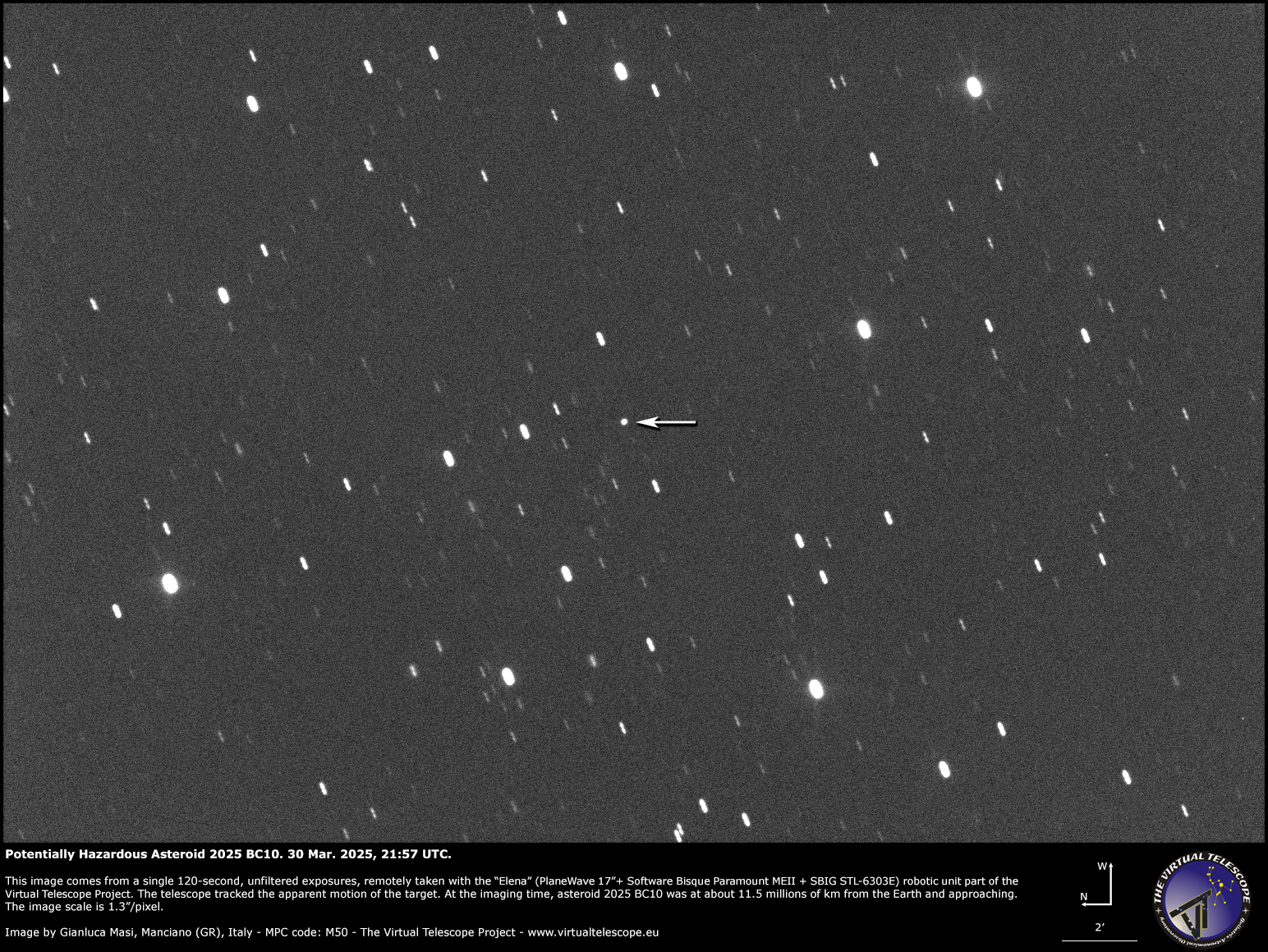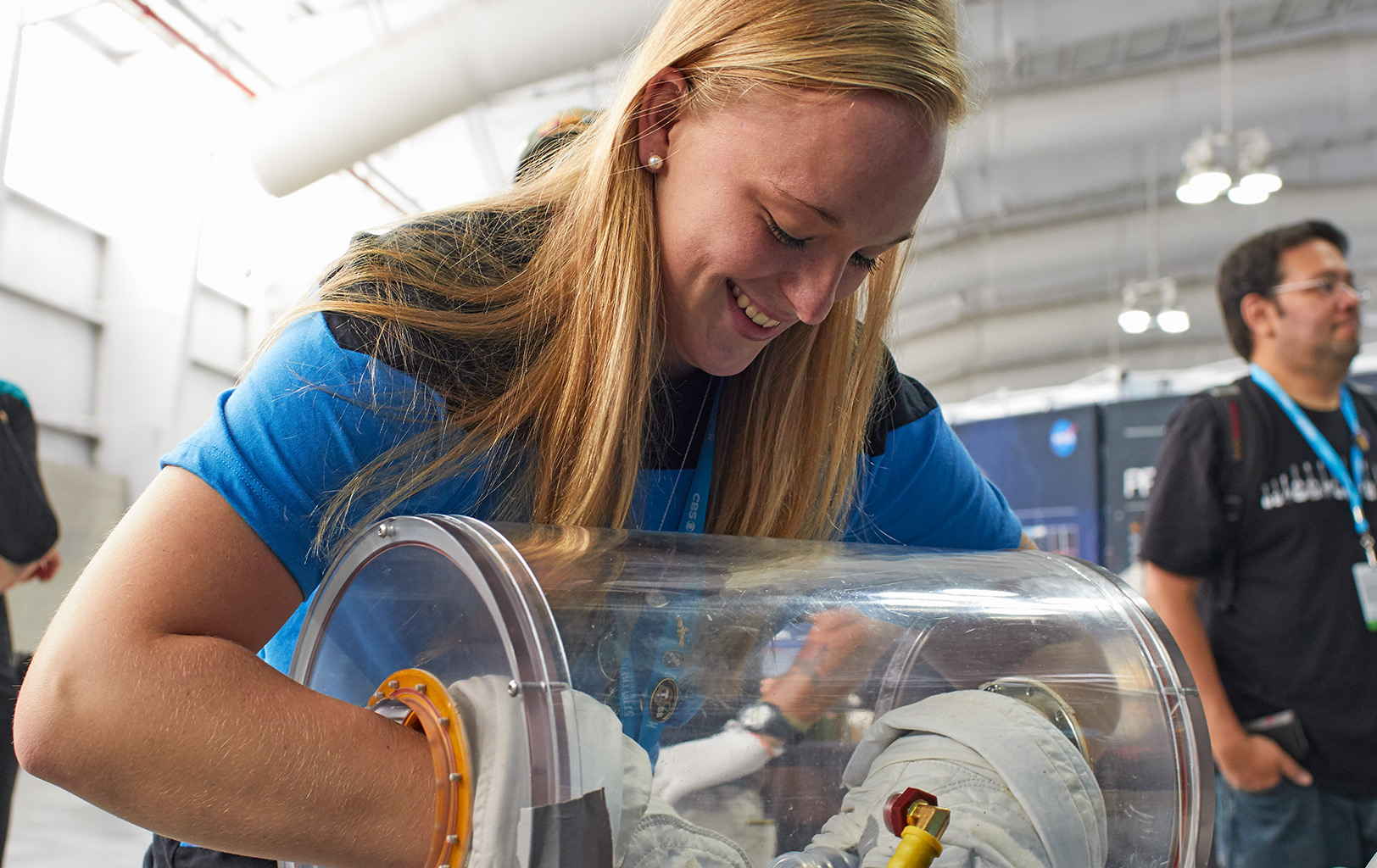Watch 'potentially hazardous' asteroid fly near Earth this weekend in this free livestream
The near-Earth asteroid 2025 BC10 will pass safely near our planet on Saturday (April 5). The Virtual Telescope Project will livestream views of the asteroid's close approach online.
An asteroid will make a close pass of Earth this weekend and you can watch it live online.
The near-Earth asteroid 2025 BC10 will sweep briefly across the early morning sky on Saturday (April 5). The asteroid will pass safely by Earth, making its closest approach at 6:12 a.m. EDT (1012 GMT) from a distance of 2.3 million miles (3.7 million kilometers), about 9.6 times the average distance between Earth and the moon.
The Virtual Telescope Project will provide a view of the asteroid's close approach using its robotic telescopes in Manciano, Italy (weather permitting). The project's free online livestream will begin at 4 p.m. EDT (2000 GMT) on Saturday, as the asteroid moves away from Earth. You can watch the livestream here on Space.com courtesy of the Virtual Telescope Project or directly on their WebTV page or YouTube channel.
Asteroids are small, rocky remnants from the early formation of our solar system. They orbit the sun and are mostly found in the Asteroid Belt between Mars and Jupiter, but some orbit closer to Earth. When viewed from Earth, asteroids appear as faint moving points of light through telescopes.

First discovered on Jan. 28, 2025, asteroid 2025 BC10 has an estimated diameter between 1,181 and 2,625 feet (360 and 800 meters). Despite being labeled by NASA as potentially hazardous due to its size and proximity to Earth's orbit, Saturday's flyby poses no risk to our planet, Virtual Telescope Project founder and astronomer Gianluca Masi told Space.com in an email.
The Virtual Telescope Project snapped a photo of the asteroid on March 30, using one of its robotic telescopes to track the asteroid's movement across the sky, matching its speed and direction. As a result, the asteroid appears as a sharp dot of light in the 120-second exposure, compared to the background stars, which exhibit short trails from their relative movement.
Follow Samantha Mathewson @Sam_Ashley13.
Breaking space news, the latest updates on rocket launches, skywatching events and more!
Join our Space Forums to keep talking space on the latest missions, night sky and more! And if you have a news tip, correction or comment, let us know at: community@space.com.

Samantha Mathewson joined Space.com as an intern in the summer of 2016. She received a B.A. in Journalism and Environmental Science at the University of New Haven, in Connecticut. Previously, her work has been published in Nature World News. When not writing or reading about science, Samantha enjoys traveling to new places and taking photos! You can follow her on Twitter @Sam_Ashley13.
You must confirm your public display name before commenting
Please logout and then login again, you will then be prompted to enter your display name.

